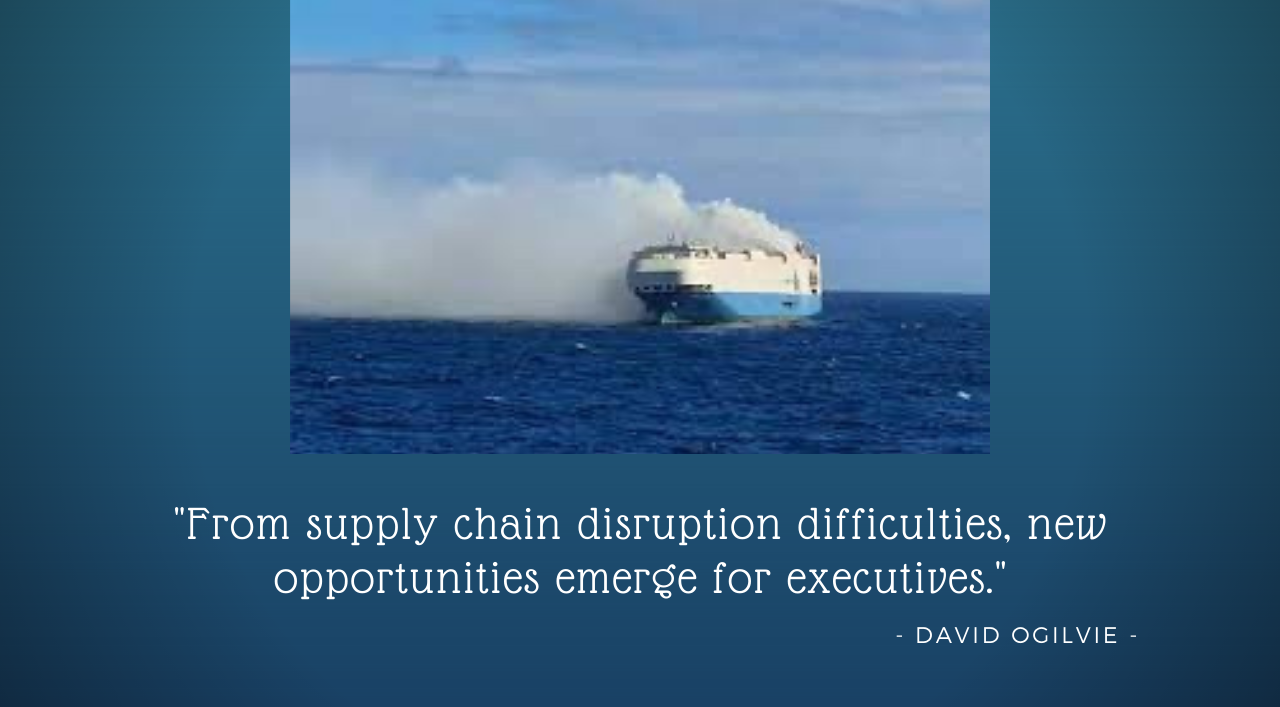
My Dreams Go Up In Smoke
You will no doubt have seen the news item about the ship, loaded with expensive cars, on fire in the Atlantic Ocean. The operator of the ‘Felicity Ace”, the ship transporting thousands of Porsches, Bentleys, Lamborghinis and other Volkswagen AG vehicles, said it assumes the car carrier is still on fire almost a full week after the crew abandoned ship. The risk-modelling company Russell Group estimated there is $401 million worth of cars on board.
There go a few of my dream cars – up in smoke, and it brings a tear to my eye.
Customers of the car industry are already suffering from supply chain disruption. Computer chip and other supply chain shortages have disrupted the production lines of all car companies. Place an order for a new car now and depending on who you are buying it from, your wait will vary from many months to over 12 months. As a result of the chip and supply chain disruptions, the motor vehicle industry, in part, has moved from a “buy from stock” to a “build to order” model. A significant change impacting consumers.
The customers whose cars were on that ship will, obviously, now have to wait a lot longer while VW rebuilds those vehicles.
The Australian Financial Review recently reported, “With new vehicle shortages, later-model second-hand cars have jumped in price by between 30 per cent and 50 per cent”.
What has also happened as a result of the shortages is the vehicle manufacturers’ margins have improved, like those of the shipping companies, whose margins have improved due to the capacity constraints. With the inflation genie out of the bottle, which I have written about many times before, don’t expect this situation to return to what it was any time soon. In fact, the pricing on these goods will only increase from now on.
This has me thinking, what opportunities or advantages are there for companies in the current supply chain disruptions? I believe these difficulties provide each executive with the opportunity to:
- rethink your material sourcing options. When you consider the cost of shipping, the cost and availability of shipping containers, additional dummerage costs, the current disruptions are providing you with the opportunity to review your current strategy. Let’s be frank, if it has been more than 18 months since you last reviewed your strategic initiatives, then that strategy is out of date. What served you well prior to COVID will not serve you well now. Now is the time to reconsider reshoring or near-shoring your supply base. Bring manufacturing capability back to this country.
- rethink technology use. Productivity improvements will take a more important position should you reshore your manufacturing capability. To help overcome the increased labour component the use of robotics in factories and warehousing will take on a more important role. This requires more digital transformation projects, which admittedly do not have the greatest success rate. However, as I mentioned in the section above, approaching these initiatives with a different mindset dramatically increases your chances of success.
- deeply understand your value chains. ‘Chains’, plural because each company has many they have to manage. Time to revisit the concept of value add, identify where there is waste in your system and take steps to remove it.
Unfortunately, the consulting business can be full of hype. I have recently seen lots of highfalutin talk from the big highly-priced consulting firms about how to solve supply chain issues. The reality is this is not rocket science.
While the answers to these complex issues are conceptually simple, they are not simplistic. It is not always easy to achieve success. Success comes from:
- leveraging a proven supply chain model (ask me about my revamped 4V supply chain model);
- applying different ways of thinking;
- instilling new business disciplines; and
- simply doing things differently from the way you do them now.
If you are looking to improve your supply chain performance, call me for a confidential discussion on how this can be achieved.
A side note on the fire onboard the ship:
“Of VW’s almost 4,000 vehicles aboard the ship, the models include Golf compact cars and ID.4 electric crossovers, according to an internal email last week from the automaker’s U.S. operation. Extinguishing lithium-ion battery fires can take thousands of gallons of water (multiply that by 4.5 times to convert to litres) much more than what it takes to douse a typical combustion engine.”
This could potentially have impacts on an individual’s fire insurance premiums for those who purchase electric vehicles and store them in their garage. I am thinking there is more to the electric car debate than running costs.
Sincerely,
David